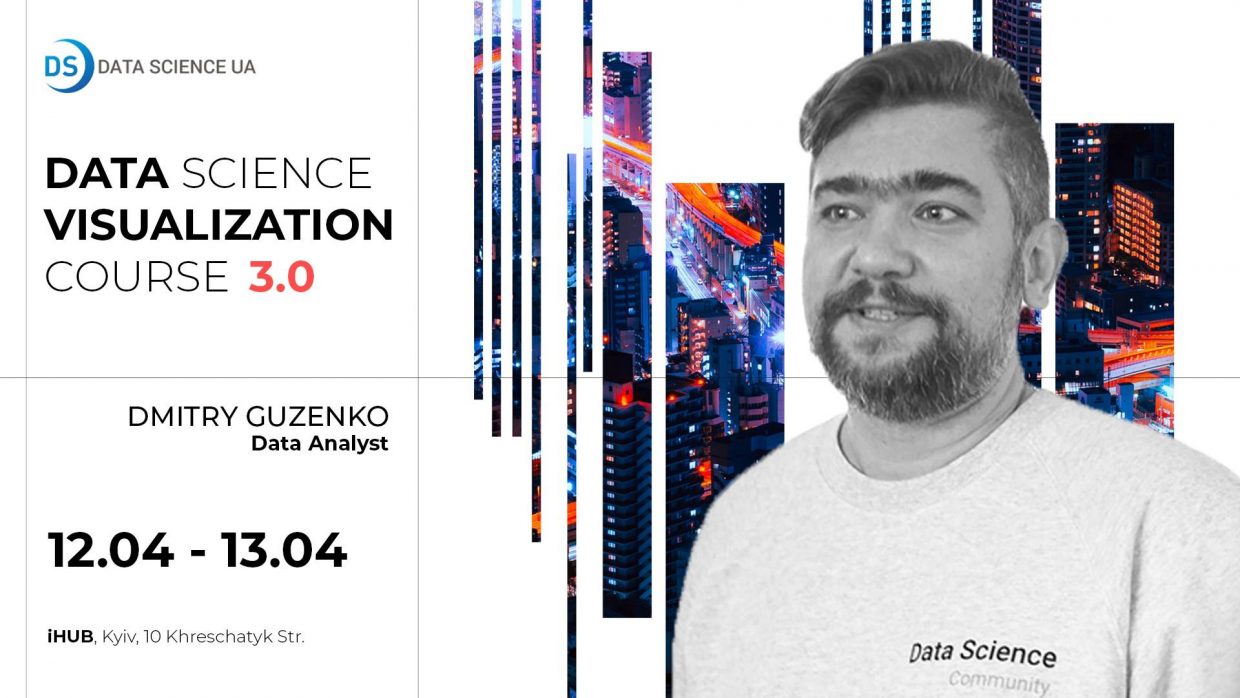Data analysts, top executives, executives and Data Scientists – these categories of professionals understand the value of data visualization like no other.
April 12-13 Data Analyst Dmitry Guzenko will hold a two-day Data Science Visualization course.
Dmytro has over 20 years of experience in business process automation and ERP implementation, 10 years of experience in system analysis and business model architecture, 3 years of data management expertise to improve company performance.
He has experience in solutions architecture, business analysis and can tell everything about best practices to increase investor value.

![[:en]nika[:]](https://data-science-ua.com/wp-content/uploads/2019/10/veronica-tamayo-flores-150x150.png)
